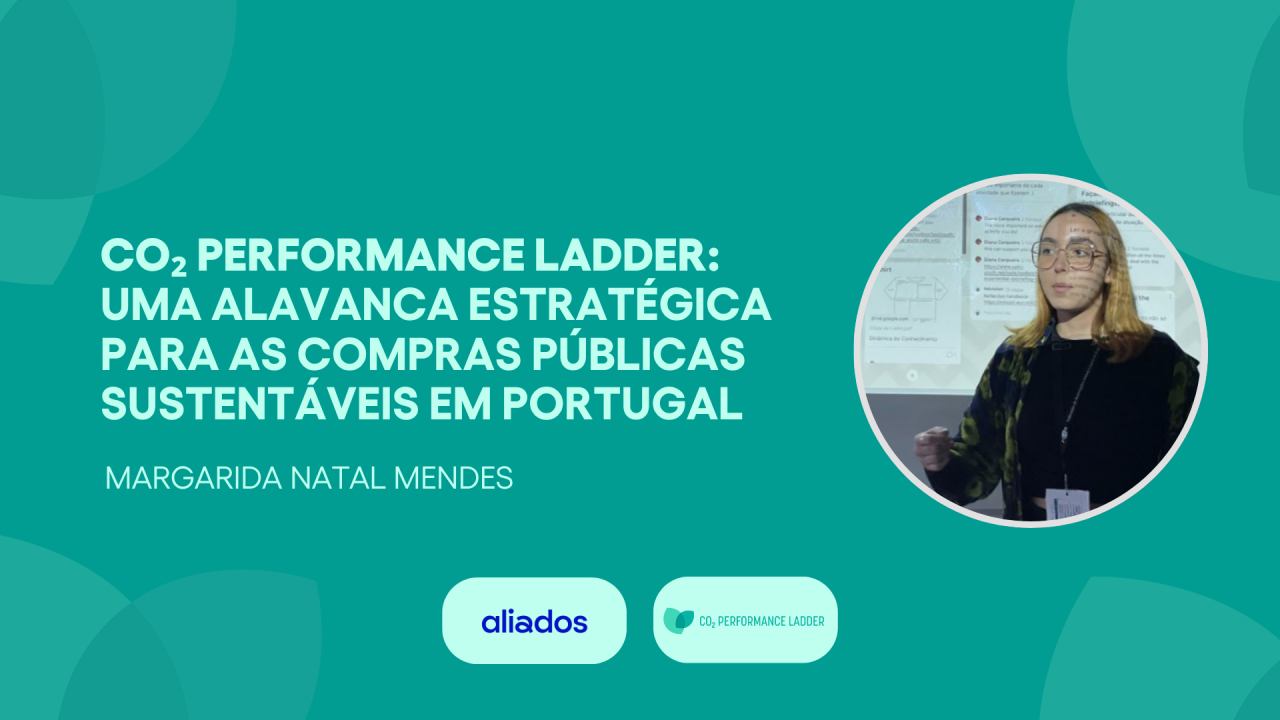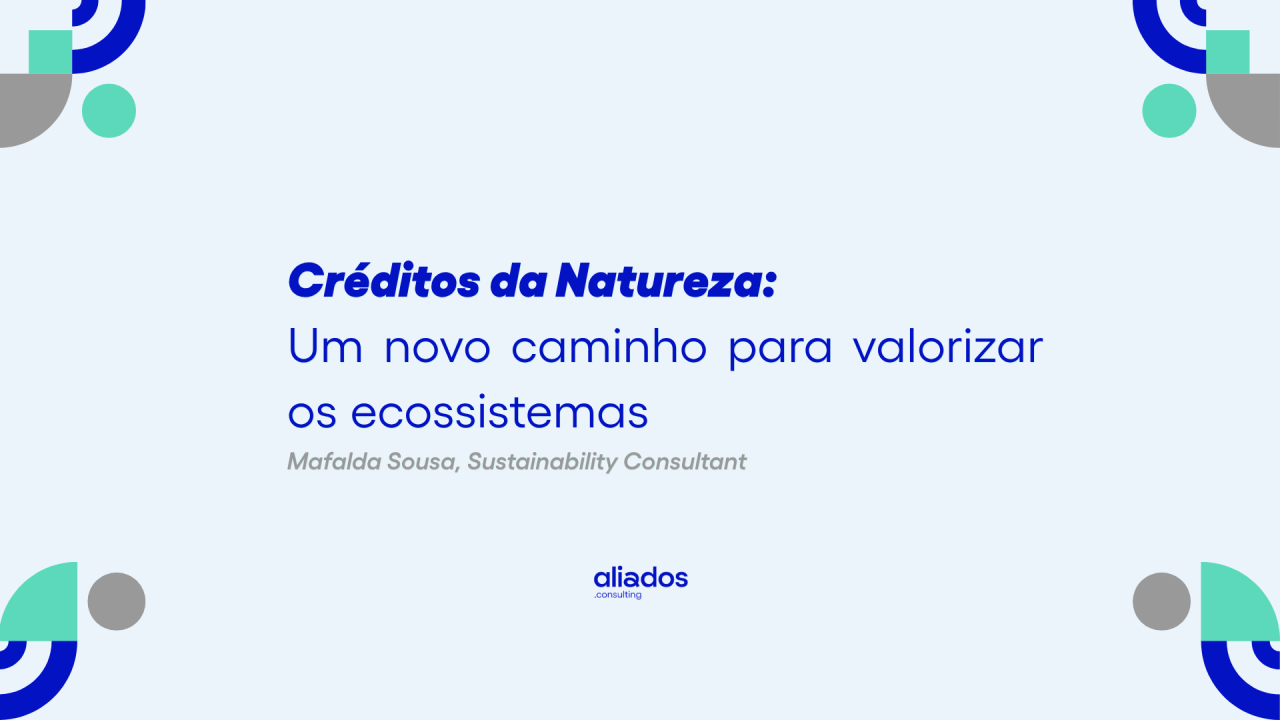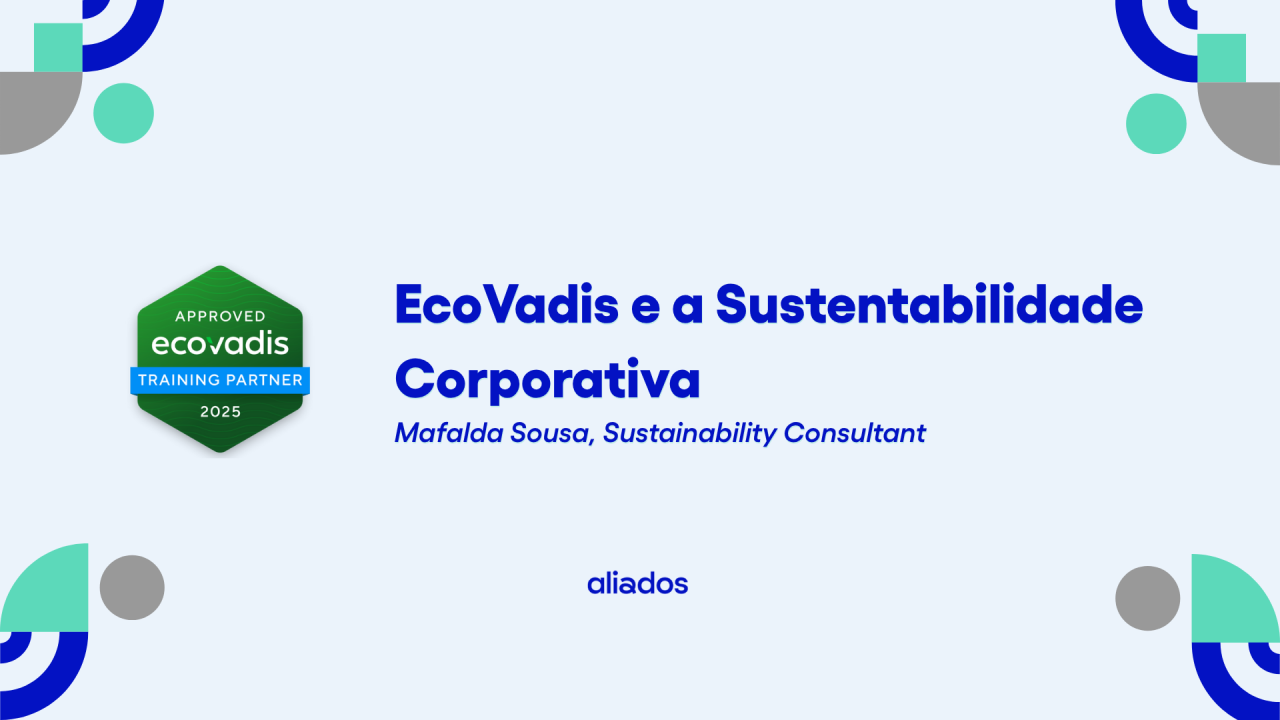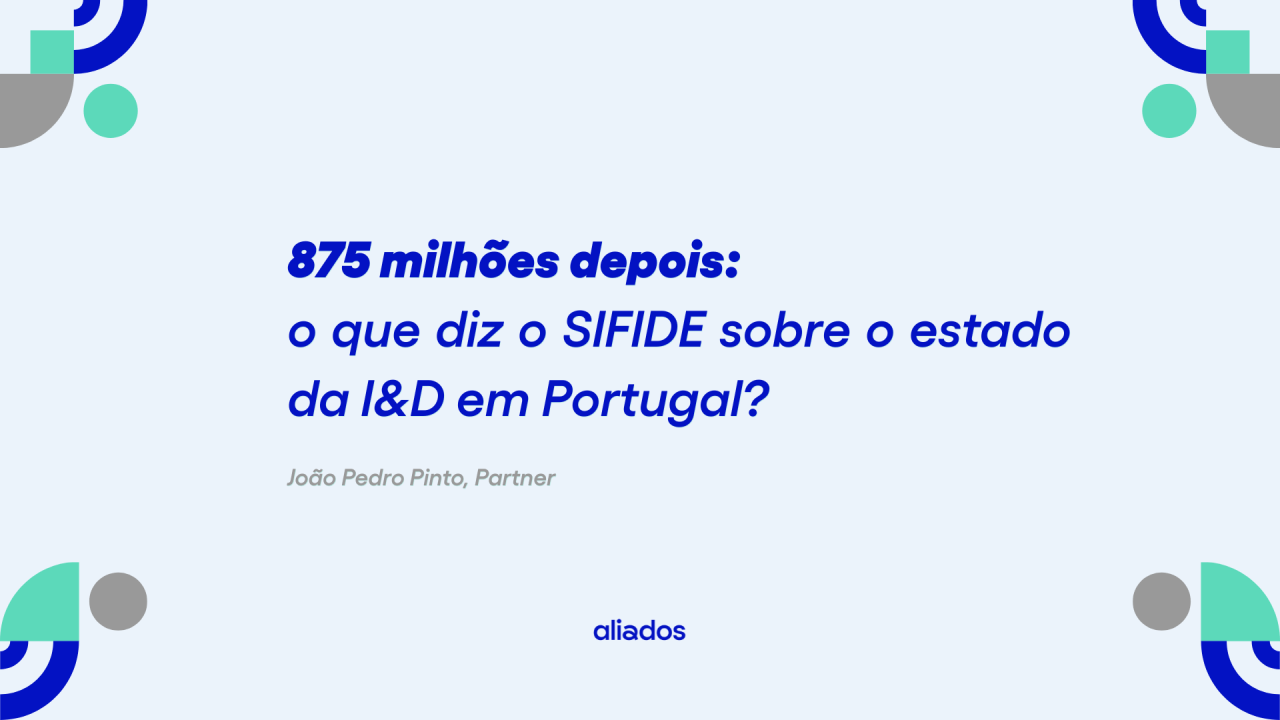Double Materiality Analysis: Key Learnings from Industry Experts
The entry into force of the Corporate Sustainability Reporting Directive (CSRD) has rapidly reshaped the corporate sustainability landscape across the European Economic Area. This sustainability reporting directive requires a more rigorous and transparent approach to the communication of environmental, social and governance (ESG) matters, obliging organisations to consider both how environmental and social factors affect their financial performance, and the impact that their activities have on society and the planet. This holistic analysis is known as Double Materiality.
With the aim of clarifying the importance of the emerging concept of Double Materiality Analysis in the context of the new directive, and of discussing how companies can face the challenges of this new era, Aliados Consulting gathered, in a webinar, two experts in corporate sustainability: Sónia Cardoso (Head of Sustainability – Sonae) and Eduardo Moura (Senior ESG Advisor – EDP).
In a dynamic exchange of ideas, the experts shared their experiences and perspectives on how organisations can prepare for the new regulatory requirements, highlighting best practices and key challenges.
This article is divided into the most relevant learnings drawn from this discussion:
“Today, companies need to be open companies, they need to be transparent”
— Eduardo Moura, Senior ESG Advisor, EDP
Eduardo Moura brought a strategic perspective on the growing importance of transparency in today’s business environment, affirming that companies can no longer operate as isolated and closed entities. “Today, companies need to be open companies, they need to be transparent with all their stakeholders,” he stressed, underlining that the CSRD requires organisations to provide material information so that stakeholders can easily understand how the company behaves and how it is positioning itself in the face of future challenges.
“It is a learning process for everyone”
— Sónia Cardoso, Head of Sustainability, Sonae
Sónia Cardoso shared her vision and experience of conducting Double Materiality Analysis, emphasising that this is still a very early-stage process for most organisations. The information and guidelines available to carry out such an exercise effectively remain limited and highly subjective. “It is a learning process for everyone,” she remarked, reflecting on the complexity of implementing this new approach.
One of the greatest challenges she reported, in addition to the difficulty of converting the CSRD’s general guidance into practical actions, was understanding how the various business areas within Sonae could converge into a consolidated and integrated report. Sonae is “a holding with a portfolio of several different sectors,” she explained, noting that each sector has its own dynamics, making the unification of information even more complex.
To overcome this challenge, Sonae chose a bottom-up exercise, characterising each company within the group individually. The goal was to ensure that the result of this process could serve as both a management tool and a reference for each company’s approach to sustainability.
Eduardo Moura also stressed the importance of dialogue between companies in this new regulatory scenario. “Today, what happens is that we companies have to talk to one another,” he said, noting that EDP and Sonae are examples of firms which, under regulatory pressure, are collaborating to meet the new requirements.
“First of all, provide training”
The Senior ESG Advisor at EDP, with 20 years of experience in drafting sustainability reports, shared the steps that EDP adopted to ensure the team was prepared to work in line with the new sustainability reporting directive, and which he recommends. “First of all, provide training,” explained Eduardo, as a strategy to ensure that all employees involved in preparing the financial and non-financial report understood the directive and the complementary standards.
He advised companies to begin with a straightforward reading of the directive, in order to become familiar with the main concepts, stressing that “the reading of the directive is very easy if we quickly dive into the ESRS, which are the details of each of the points under legislative scrutiny.”
Sónia also highlighted the importance of raising awareness across different internal departments as a crucial step in the process, covering not only the teams responsible for financial and non-financial reporting, but also those dealing with risk, environment, human resources, social responsibility, governance, and others. At Sonae, a meeting was organised where all these teams came together for a dedicated training session on sustainability concepts, which, she noted, was essential to help everyone understand that their actions and activities also contribute to the company’s sustainability.
“Hire an external consultancy”
Eduardo explained that the second step EDP implemented to ensure the team was fully prepared to meet the new CSRD requirements was to “hire an external consultancy” to guarantee a precise and impartial interpretation of the standards, avoiding natural biases from the way reports had traditionally been prepared. “The way we did it before greatly influences how we read the directive,” he observed.
The following step was to conduct an internal diagnosis, identifying analytical gaps, indicators and processes. Finally, they moved into practice. Eduardo noted that EDP had already carried out a first Double Materiality Analysis this year, but emphasised that this was only the beginning. The group plans to present a more robust result next year.
“Some companies already have management systems in place and can review those systems”
To facilitate the Double Materiality Analysis, the experts encouraged companies to examine existing management systems and use them to characterise the value chain, identify risks and impacts, determine scales, levels and categories of risks, among others. “Some companies already have management systems in place and can review those systems” to extract data and integrate them into their Materiality Analysis.
The key, according to Sónia, lies in the integration of these processes, so that the company has a clearer and more cohesive vision of what needs to be managed. To make the exercise easier, the Head of Sustainability at Sonae suggested reflecting on the following question: “Where do we already have things we can use?”
“We cannot take the mathematical result of this assessment at face value”
The careful selection of stakeholders for the consultation process was another challenging aspect mentioned by Sónia. Sonae’s sustainability team had to reflect carefully on which stakeholders should be involved, their critical capacity on sustainability issues, and how they could influence results. The Head of Sustainability at Sonae stressed the importance of involving stakeholders with in-depth knowledge of both the organisation and sustainability issues.
She added, “we cannot take the mathematical result of this assessment at face value,” referring to stakeholder consultation, since responses are not always well-founded. An internal critical analysis is needed, involving top management in filtering the assessments and identifying the truly material issues, because “in reality, it is those that we are going to manage,” she concluded.
According to Eduardo, the focus should be on stakeholders who are negatively affected, noting that “in this directive there is no consultation of stakeholders per se, what exists is consultation of negatively impacted stakeholders.”
“What is truly material must be under management”
One of the greatest challenges highlighted by Eduardo was dealing with the huge number of material issues that emerged at the start of the process. “We began by identifying around 600 data points that were material,” he reported, explaining that the focus is now on filtering and prioritising what is truly relevant and manageable.
“What is truly material must be under management, and it cannot be 600 issues,” he concluded, sharing this fundamental learning with the audience. Sónia Cardoso agreed, adding her view that “the company’s management capacity helps to filter” the issues that are genuinely material.
“Use the opportunities exercise as an exercise to innovate”
Sónia also shared her perspective that we should adopt a mindset oriented towards creating positive impact. In her words, it is important to “use the opportunities exercise as an exercise to innovate and to position ourselves in a truly more ambitious way that goes beyond mere management of negative impact.”
In her view, if everyone adopts this vision of creating positive impact, this exercise will become a highly useful tool, guiding us towards a truly more sustainable future.
“The benefit of being part of a business association that follows these issues is huge”
Particularly for small and medium-sized enterprises, Eduardo underlined the importance of joining business organisations, such as BCSD and sectoral associations, which can offer valuable support throughout the process. “When we are in relatively small companies and only have one person (…) dealing with sustainability, the benefit of being part of a business association that follows these issues is huge,” he remarked, sharing a piece of advice he believes can make a real difference.
“Do the first exercise without fear of making mistakes”
In conclusion, we must highlight Eduardo’s valuable recommendation: “do the first exercise without fear of making mistakes.” This advice reflects the importance of starting the process, learning from challenges, and improving the approach along the way.
The journey towards sustainability is built on attempts, adjustments and progress. It is essential for organisations to begin the path without hesitation, embracing innovation and continuous improvement as integral parts of this transformation.
Ready to start your Double Materiality journey?
This article was written based on the contributions of Sónia Cardoso and Eduardo Moura during the webinar on Double Materiality Analysis, organised by Aliados Consulting on 3 October 2024.
At Aliados Consulting, we help companies navigate the new CSRD requirements with expertise and practical tools. Let’s build sustainable solutions together.
🎥 Watch the webinar 💬 Contact us





